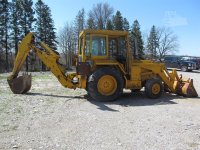As to why both sides of a device could be hot, that is sometimes done when they want a ground to activate a circuit (pretty common on safety circuits, it simplifies the logic and makes a short fail "safe" rather than "still running"). If both sides are the same (hot), it is off. Ground out one side, and now the device operates (and sometimes operates to kill some function of the machine).
The fly in the ointment with this setup is that failing safe for a short means that a short to ground anywhere in the circuit can kill it. Since you already know that you have a safety fault, try tracing any of those switch wires and look for pinch points, out of position, frayed insulation, rubbing where they go through fenders/instrument panels/firewalls/brackets, etc.
Also, since a bunch of these systems run on a reverse (machine is active when the switch is off) logic, this means that an unplugged switch does not complete a circuit. but a jumpered one does. Look for any switch (or plug-in point) where a switch is wired across, a jumpered socket, patch wire, or wires at some random access point near seats or attachments where wires that look like they should go to something are twisted/soldered/crimp connectored together. The more of this stuff that is restored to original logic and not bypassed the closer you will be to the original logic of operation no matter if it is ground-to-make-machine-safe or complete-live-voltage-circuit-to-make-machine-safe. Use a multimeter on an existing "working" switch and see if it completes or opens a circuit when the function is "unsafe" (like releasing a button when a weight is removed from a seat might complete a circuit to ground out a relay or the ignition). See if you can deduce the general safety loop logic (power is "safe" vs. ground is "safe") from that.

